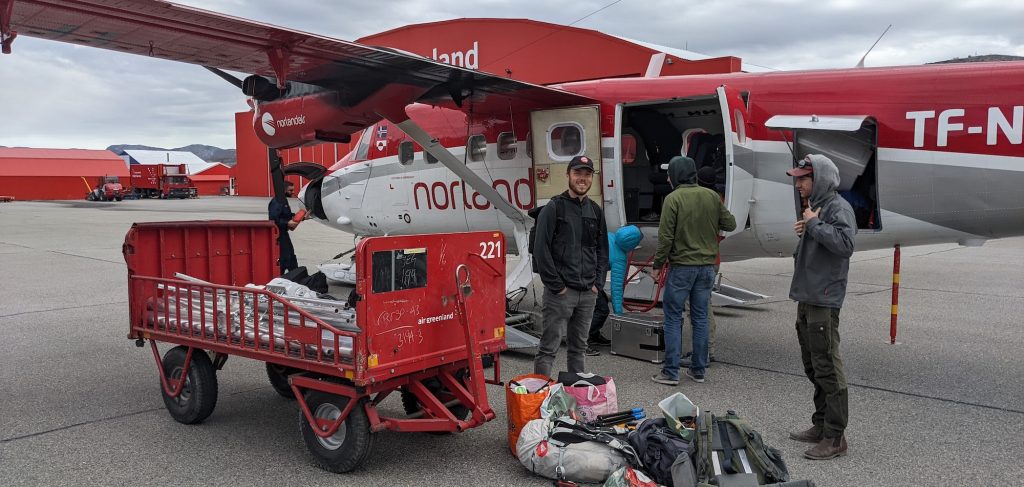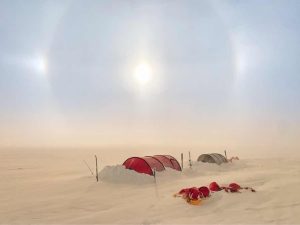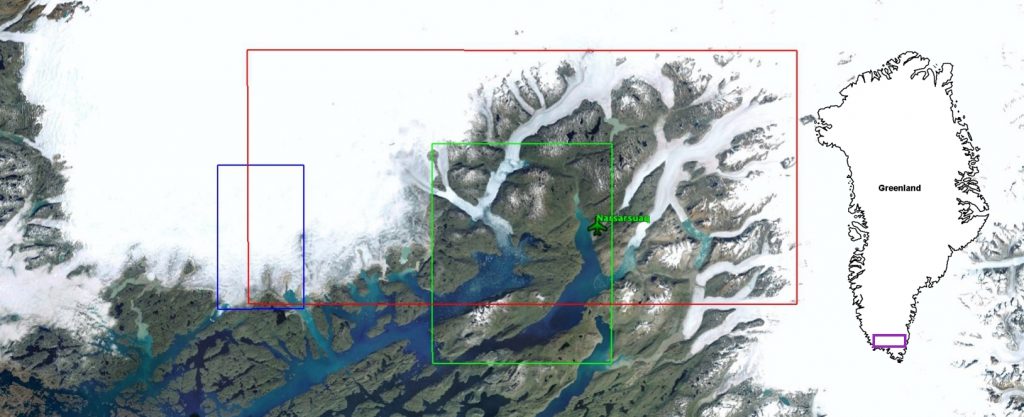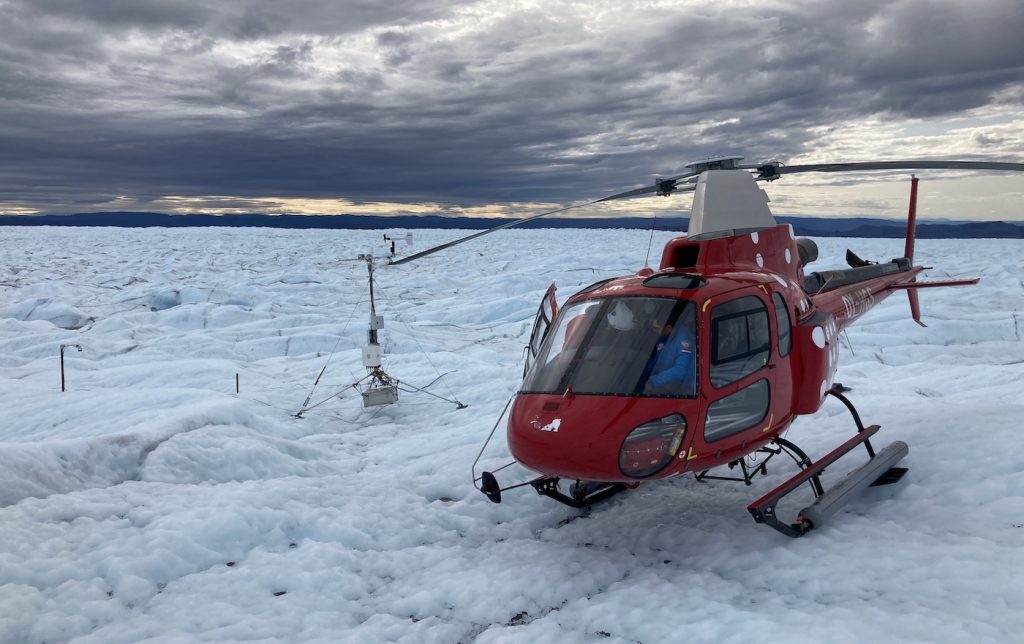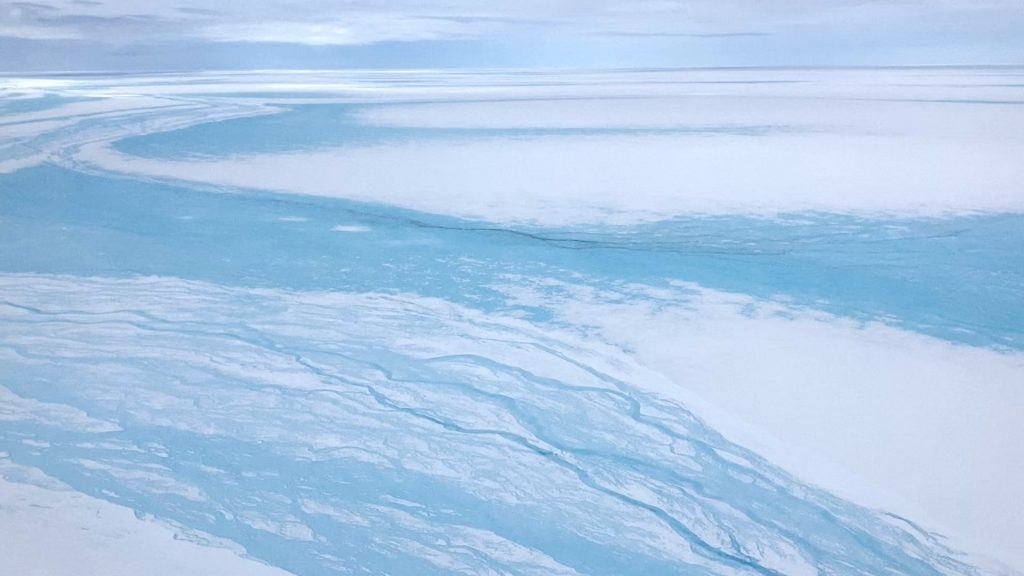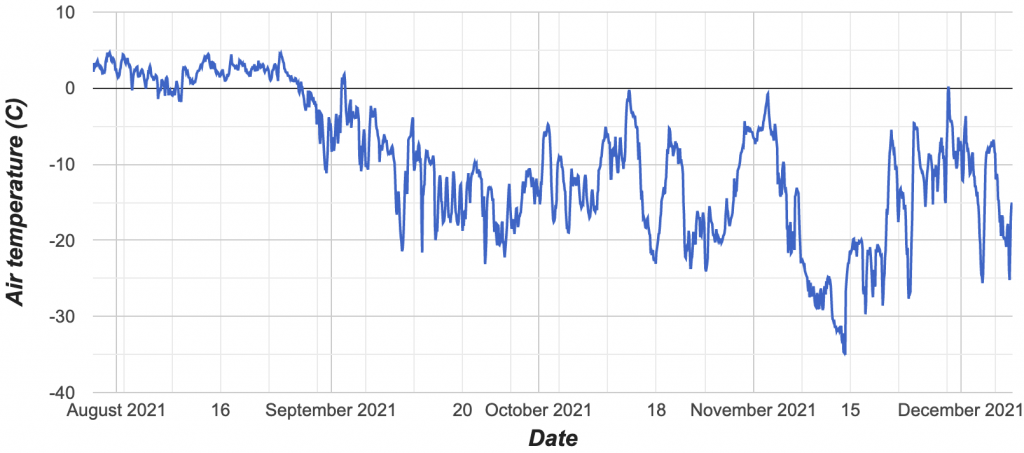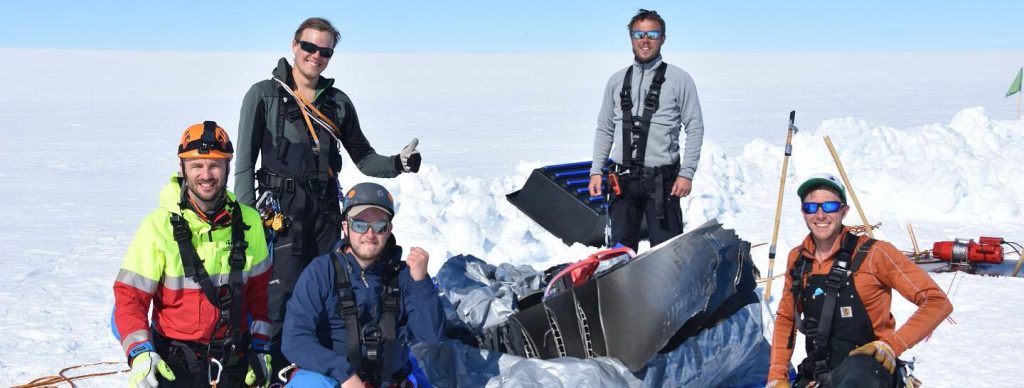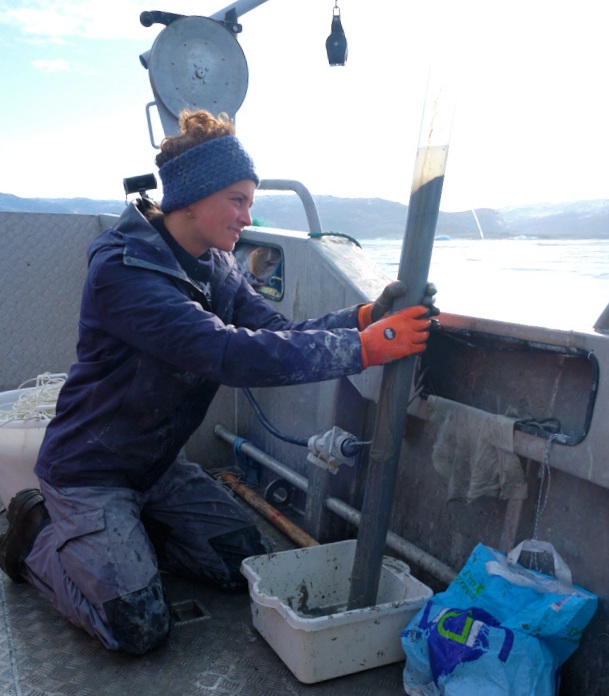Last year, FORLOH funded the installation of climate monitoring equipment in Greenland. Together with Greenland Guidance, ice melt and motion trackers were placed at three distinctly different glacier sites in south Greenland. Now, after having collected more than a year’s worth of data, the region is starting to reveal its characteristics. Comparing these new measurements to those taken 40 years ago tells us something about the impact of climate change.
See the original blog post on the FORLOH website.
Why doing science in Greenland is important
Greenland is located in the far north where temperatures are increasing faster than anywhere else on our planet. The world’s largest island is of particular interest because of its enormous, three kilometer thick ice sheet. If melted, the ice sheet would raise global sea levels by nearly three floors of a building, causing trillions of dollars worth of trouble for coastal areas across the globe. As mentioned in a previous blog post, the warmer it gets, the more the ice sheet mass loss becomes an unstoppable, runaway process. And this is just one of the facets of climate change. Scientists warn politicians that we are heading towards a brick wall and should push the brakes instead of easing off the throttle.
Reason enough to assess the state of the Greenland ice sheet by taking detailed measurements. That’s why FORLOH started investing in climate science in 2021. We selected the southern part of the Greenland ice sheet as our study area. Here, because conditions down south are a bit warmer, we can see how the rest of the ice sheet will fare in a future warmer climate.
Google map showing the locations of the FORLOH-sponsored glacier monitoring sites in Greenland. Zoom in to take a closer look.
Rugged instruments in extreme climate conditions
Last year, towards the end of the short Greenland summer, we installed three custom-built draw wire ice ablation trackers (DWIATs). Such instruments are used to study the two most important mass loss processes for the Greenland ice sheet: how fast the ice melts, and how fast the ice flows to the sea. Anything installed on an ice sheet, or on glaciers, moves with the ice as it melts downward when temperatures are above-freezing, and as it slowly flows downslope. This “moving with the glacier” is precisely what we take advantage of in our monitoring techniques.
We chose three sites with very different characteristics to be able to study the whole range of climate impacts. Site 1 is on a slow-moving part of the main ice sheet, right next to a moulin – a meltwater drainage hole running straight through the ice sheet. Site 2 is on the fast-flowing valley glacier, named Eqalorutsit Kangilliit Sermiat; this glacier ends in a fjord where it produces icebergs, making it dynamically a different glacier than land-terminating ones. Site 3 is on a much slower, lake-terminating glacier named Nordbogletsjer, and provides historical context as the site was also monitored four decades ago.
A draw wire ice ablation tracker, measuring glacier melt and motion. A wire running down from the instrument box is drilled into the glacier; as the ice surface melts down, the wire coils up in the box, so that the onboard computer can record how much ice has melted.
One thing these three sites have in common is that climate conditions are tough. Temperatures drop far below freezing in winter. Storms are among the fiercest on the planet. Drifting snow in winter bombards the instruments with static electricity. And a thick layer of winter snow exerts huge pressure on anything buried in it, as it compresses and melts in spring. That’s why we use extremely rugged instruments that are custom-built to survive anything the polar climate can throw at them.
Because the instruments also transmit their measurements via satellite link, we can study their data even before returning to the sites for maintenance. So let’s have a look at what the ice sheet has been up to over the past year.
Slides and caterpillars
The instruments measure ice motion using GPS. The glaciers flow from high to low elevations year-round, as gravity urges the ice down to the fjords. After more than a year of measuring, we now have a good idea of the average velocity at the three measurement spots. At “slow” site 1, the ice moves with an average velocity of 49 meters per year. At site 2, much more ice is transported judging from the average velocity of 1113 meters per year, over 20 times faster. The ice at site 3 moves 97 meters per year.
The horizontal velocity at which the ice moves at the three measurement sites. Note the difference in scales between sites 1 and 3 (left axis), and site 2 (right axis).
Big dynamic differences between the sites can also be seen in the annual cycles. The above graph shows that the ice at site 2, and to a lesser extent at site 3, has increasing velocities between autumn and spring – the period without significant melting. This has to do with mass building up as ice is constantly being supplied from higher regions of the ice sheet. Then, at the start of the melt season (in May), the ice suddenly accelerates. This occurs when meltwater runs straight down through cracks in the ice, making the glacier bed wet and slippery, causing the glaciers to slide more quickly. Once the glaciers have adapted to this by creating subglacial channels, efficiently draining the meltwater to the fjord, they regain their footing and the velocity drops during summer – in spite of large amounts of meltwater running through the system!
Site 1 does not experience a clear seasonality in ice velocity, indicating that the ice “conveyor belt” works differently here. Instead, a clear (roughly) three-week periodicity in speed exists at site 1, which can also be identified at both other sites. Velocity peaks at the three sites often occur at the same time, in spite of the tens of kilometers/miles separating them. This type of variability is often due to weather, with rain or melt events presenting the glacier bed with more water than it can handle, causing enhanced sliding and motion for a few days. But this is not all. The ice sheet has also been shown to move like a caterpillar, with velocity “waves” moving through the system. This can also explain part of the variability seen in the velocity graph.
The change in altitude of the three instruments since their installation in 2021.
To add to the picture, the above graph shows the change in instrument altitude. Fast site 2 is seemingly the most straightforward to interpret; here the ice flowed downhill by over a kilometer, losing 46 m of elevation in the process. But the other two sites show a more complicated story. During winter they actually gain altitude, as ice is supplied from higher regions, piling up the ice in its path. This local mass gain is then compensated during summer, when melting happens. At site 1, the two processes of ice dynamics and melting combined resulted in net thinning of the ice sheet by up to two meters in the past year, which fits the trend of what is seen around the ice sheet in the current climate. But remarkably, at site 3 we see a net thickening of about two meters. This is likely because more ice is flowing into the area than before due to an acceleration of the glacier on which site 2 is located, which feeds Nordbo glacier of site 3. As we’ll see below, it’s not because the ice is melting less these years.
Ice melt larger than 40 years ago
The instruments keep track of ice melt by measuring the length of a draw wire drilled into the ice. When the ice melts, the instrument tripod melts down with it and the wire coils up in the sensor. Even though a lot of snow falls in winter, and melts again in spring, this doesn’t contribute to the net surface mass balance – the mass lost over a year. The melting of the bare ice underneath started in June. With the melt season having come to an end in early October, we can assess that at the first site 3.98 meters (1.5 floors) of ice melted, at the second site 2.37 meters, and at the third 2.75 meters. The fact that site 1 melts fastest is partially due to it being at lower elevation where conditions are warmer (670 meters above sea level, versus about 800 and 880 meters at sites 2 and 3).
The amount of ice melted in 2022 at the three sites.
Up to four meters is a lot of ice, but it is impossible to know whether this is a “big” or “small” melt year without comparing it to other years. Not coincidentally site 3 was chosen for instrumentation. Here, researcher Poul Clement measured the surface mass balance on behalf of the Geological Survey of Greenland between 1977 and 1983. Various old data reports tell us that in 2022 melt at site 3 was about 24% larger than the average for 1977-1983. Even though 2022 was not a particularly warm year in the current climate. So a melt year that is “average” at best in present-day climate conditions, still exhibits considerably more melt than 40 years ago when “normal” was cooler.
The complexity of it all
The below graph shows how it all fits together at site 3; ice velocity, thickness and melt all interact. You’ll see two things that you couldn’t tell clearly from the previous graphs. The first is that the altitude drop that starts in early summer is largely due to melting. This makes sense: ice flow transports the ice into the area, and melting removes an approximately equal amount of mass. If it didn’t, the system wouldn’t be in balance, generally speaking.
The data collected at site 3 combined in a single graph. Note the different Y-axis for the yellow lines on the right-hand side.
The second thing to notice about the graph is that the high-frequent changes in ice velocity and thickness correlate pretty well. But ice thickness seems to be leading on most occasions: first the ice thickens/thins, and then, as a result, the ice starts moving faster/slower.
In hard-to-reach places, collaboration is key
We think it is imperative that scientific data are collected for the good of everyone. That’s why our data is open-access, available to anyone across the globe. You are more than welcome to have a look at the data here. If you’re a scientist (or student or teacher or just someone with an interest in glacier data), we can send you a batch of raw or processed data for you to use in your research. We’ll also upload the data to the servers of the Programme for Monitoring of the Greenland Ice Sheet (PROMICE) where scientists can download all sorts of important glaciological data and use them for generations to come.
The open-access nature of science becomes even more relevant in remote places, where transportation (by helicopter) is expensive and opportunities for visiting hard-to-reach field sites are few. Therefore we are excited that the large Swiss Green Fjord project chose the same region to study, resulting in data exchange and logistical collaboration. Likewise, the Geological Survey of Denmark and Greenland, already active in the region for decades, chose FORLOH site 2 to install a phase-sensitive radio echo sounder – a radar system for studying processes at the glacier bedrock, putting our data to good use.
Looking forward
So the data have given us some first insights into the workings of the ice sheet and the interaction with the climate. Data is flowing towards climate scientists and whoever else shares the passion. This will help with better interpretation of satellite imagery in ice sheet studies, and with more precise computer models predicting the future state of the ice sheet. The more measurements we take, the more we contribute to climate science, especially in a remote and special place like Greenland. Because only few such measurements exist.
But perhaps the most relevant will be to see how ice melt and motion will change in the coming years, to get a good understanding of interannual variability, and to keep a finger on the pulse of the shrinking ice sheet. It won’t be long before we’ll be able to use simple computer modeling to estimate future melt in different atmospheric warming scenarios. Then we’ll know better how much this large ice-covered region can contribute to sea level rise. And as a scientific community we’ll have more evidence to share with policy makers, so that they can take action to further combat climate change.



